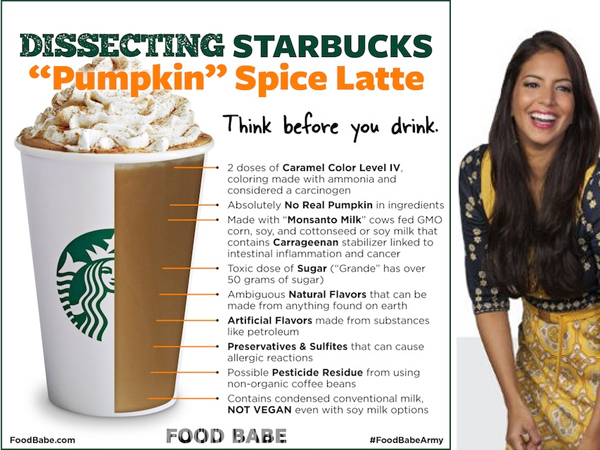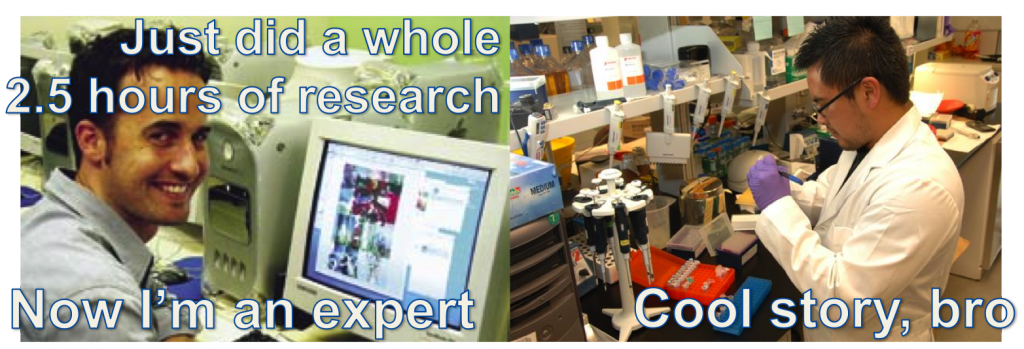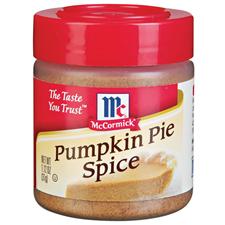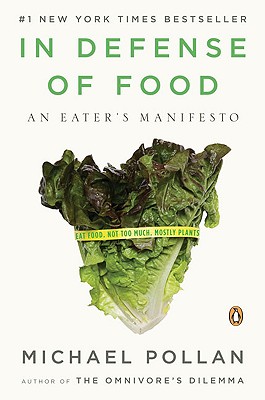Dose Determines Desired Developments: How To Not Fear Foods
The internet is a weird place some days. I mean REALLY weird. It’s amazing how it can purvey a message from someone who has all of the education of a gnat on a specific topic and make them and internationally recognized “expert” in a field with little more than a broadband connection, a video camera and easy access to Google searches. It’s a place where someone can form a thought process about how something occurs in life after only spending a few weeks or months learning about it, then go toe to toe with someone who has spent actual research time looking at that same subject, scanning hundreds if not thousands of verified and peer reviewed research articles, and had their conclusions criticized by others who know what they’re talking about, and still come out ahead by simply shouting “Conspiracy Theory!!”
That and all the advertisements for porn everywhere you search.
The problem isn’t one of a lack of information out there, but conflicting loud voices all screaming to get the attention of the public. Shock value and what Dr. Oz called “flowery language” when he was hauled in front of the congressional hearing to explain why he backed certain useless supplements with his medical reputation, is helpful to get attention compared to saying something “showed potential benefits for specific situations.” When Mehmet essentially screams “this is the magical miracle of all magical miracles to help you burn belly fat without lifting a finger and all you have to do is pay me $19.99,” it’s a much easier sell and makes more people tune in.
I see this a lot in exercise discussions, like the comparisons of rounded back versus straight back deadlifts, knees over the toes or not during squats, what causes low back pain, and even esoteric stuff like whether slower speed training is superior to faster contractions for muscle growth. Many of these debates come down to “well it worked for me and this big guy at my gym, so therefore it should work for everyone” and a couple of cherry-picked articles about a specific sub-population that used a specific methodology.
The worst is when you see people using absolute claims to push their envelope. Classics are “women should never lift more than 3 pounds or they’ll get bulky,” “carbs always make you fat,” and “I literally can’t even right now.”
A classic example of this is gluten intolerance. Everyone seems to be jumping on the bandwagon of being allergic to gluten and thinking it’s the cause of all their woes, weight gain, cough due to cold and low self esteem. It’s almost become a badge of honour for some people, proudly proclaiming at any social gathering that they’re avoiding all wheat products because it’s dangerous for you.
The funny thing about this is that people are essentially making it socially cool to be sick with a disease, known as celiac. There is no other disease that is as trendy to have as gluten intolerance or sensitivity or celiac disease. It’s more trendy to say it without having a blood test, allergy test, or genetic test to confirm your sensitivity, but to just say it after reading some books or blog posts and your personal intuition about how much you know about your body. From a testing perspective, if a person does not have a HLA-DQ2 protein encoded by HLA-DQA1*05 and DQB1*02 alleles their risk of developing celiacs disease is pretty much non-existent. This allele and protein combination is present in about 90-95% of celiacs, but not 100%, and doesn’t outright determine that simply because they have this genetic structure that they WILL get it, but if they don’t, they will not have celiac disease.
Celiac disease affects roughly 1 in 133 people, or less than 0.7% of the North American population based on statistics from the Center for Disease Control. Some research suggests that gluten sensitive individuals account for 1 in 20 members of the population, or about 5%. This is a far cry from saying everyone would be affected negatively by gluten, but it sounds way sexier to say you’re going to get immediately fat and die if you eat bread. Most of the toxic loads in bread are concentrated to the crusts, what with their burnt ends and all. I mean that’s essentially ash anyway. Do you want to eat ash? Highly glutened ASH??!? Little kids know what’s up, which is why they want the damned crusts cut off that PB & J.
Does this mean that gluten is safe to eat? For people who don’t have celiacs (where even a small amount of gluten could prove dangerous) or gluten sensitivity (where they can tolerate some, but only in small amounts), it’s not bad and you can eat it daily without much side effect.
That said, if you eat a loaf of bread each day, you’ll have some problems regardless of whether you’re gluten sensitive or not. The total amount eaten determines whether you have issues or not, just like a lot of other foods. It’s like being lactose intolerant and not being able to eat any lactose, and someone who isn’t at all intolerant having a high concentrate whey protein shake and then just murdering their toilet that night. They couldn’t handle the dose.
This is a common thread among a lot of foods: equating large doses with death in those who eat a small amount of something. An easy example for this is the water table for almost everything grown. Foods grown in close proximity to toxic sites like tailings ponds or mine sites tend to not do too well compared to foods grown hundreds of kilometers away from those sites, but due to the water table in the soil, stream runoff, and aerial deposition, some of the minerals from the tailings ponds and mine sites can migrate very far away and show up in foods produced at a distance. Because of this, even organically grown foods can have some small amounts of less than desirable compounds like copper, arsenic, heavy metals, and even radioactive compounds.
That doesn’t mean this will kill you or cause problems, especially if the amount is very small. If you lived right next to these sites, ate food grown next to them, and worked in them for years, your total exposure to these compounds would be much higher and more constant than someone who ate vegetables grown hundreds of kilometers away where the toxic compounds only occurred in the low parts per million measurements. The odds of having an adverse reaction to the higher dose is much higher than the lower dose.
This is one of the major problems with alarmist thinking that comes with knowing each and every compound that is in food. A compound that is used in the production of something and winds up with incredibly small amounts left over at the end can be singled out and the food could be said to contain it in lethal doses.
This is like me making 3 batches of chocolate chip cookies. One batch has a handful of chocolate chips. The other has a massive amount of chips, where there’s more chocolate than cookie matter. The third batch has just one single lonely delicious chip in the entire batch. All three could be said to “contain chocolate chips” but the total amount of chocolate in the third batch is so small it wouldn’t really constitute anything worth mentioning, whereas the amount in the second batch would most likely contribute to diabetes.
This is known as the dose/response bioassay, and can be found in any testing facility that looks at meaningful outcomes. How much of the chocolate chip cookie mix with the shit-ton of chocolate chips does it take for me to develop diabetes? 1, 10, 100, or 1000 cookies? That’s an important question, as if it’s as little as one cookie, I should avoid it altogether. If it’s as many as 1000, I can still eat 999 and still be in the clear.
One person who is awesome at this food alarmism is someone who calls herself the Food Babe. Recently she came out with a hate on for the Starbucks Pumpkin Spice Latte and all of its hidden ingredients.
Many of the words she uses in her investigations are “shocking, toxic, BREAKING NEWS,” and involves a lot of conspiracy phrasing like “what ‘Xcorporation’ isn’t telling you,” “what Xcorporation is hiding from us.” These are common phrasings used as clickbait to get people to read the articles. They’re designed to get a massive emotional response from the reader, which can be useful when things like facts, common sense and science get in the way.
Let’s go through some of the stuff she talks about with the pumpkin spice latte.
1. Caramel Colour IV made with ammonia. Yes ammonia is used in the production of this colouring agent, but much like if you were to cook with alcohol, when you heat it the alcohol evaporates and there is little to no alcohol left in the main dish. Caramel colouring is determined by the environment it’s to be used in, whether it will be acidic or alkalytic. In soft drinks and coffees, it’s a more acidic environment, so to be stable in these the colouring uses an alkalytic production method with ammonium, sodium, potassium or calcium hydroxides. In more alkalytic environments, the colouring uses sulfuric, acetic or phosphoric acid to keep it stable.
The acceptable daily intake of caramel colour IV without signs or symptoms of toxicology is 0-200 mg/kg of body weight. For instance, if someone was 50 kg or 110 pounds, the could consume up to 10,000mg without showing potential side effects. Most of the info about the colouring agent being carcinogenic come from this study, which looked at 4-methylimidazole fed in high concentrations to mice and rats. 4-Mel is a compound found in caramel colouring, but in very small doses. Is it worth studying further to see if it is a bad thing in humans? Absolutely.
2. No Pumpkin in Ingredients. This is a no brainer. It’s not called a Pumpkin Latte. It’s called a Pumpkin Spice Latte. Pumpkin Spice can be found at your grocery store, and is made of cinnamon, ginger, nutmeg, cloves, and allspice. It’s not made of pumpkin, but is used in the making of things like pumpkin pie to give it the flavour. This spice can also be added to things like coffee to add some unique flavour, all without adding pumpkin.
3. Monsanto Milk. Apparently anything made in large scale production is Monsanto. An easy way to get people on your side is just to call something Monsanto. It’s like gluten, it’s always bad. Bread is a gluten. Fat is a gluten. Milk is a Monsanto. Everything in the grocery store not involving “Organic” in their name is a Monsanto and therefore evil.
Most locations just use milk from the most readily available source and try to keep costs down by using cheaper milk. If you live in Canada, it’s typically milk from Canada to keep duties and tariffs lower. It would be nice if they went with an organic option, but it would most likely add another dollar or two to the cost of the latte, which would drive teenage girls and middle aged execs mental.
4. “Toxic” dose of sugar. There’s that word again! 50 grams is about 200 calories. If this was a toxic dose, everyone would be keeling over any time they had a Big Gulp, Slurpee, bottle of Coke, or a glass of Kool Aid. This study shows that most people in the US consume an average of about 150 kcals per day from sugar sweetened beverages alone, in addition to all the other sugar a person would eat each day. Essentially, people are alreacy consuming close to 40 grams of sugar from beverages a day already, which hardly makes it a toxic dose if everyone already does it and doesn’t die. This means if you’re an average person and you add in a pumpkin spice latte, you’re going to double the daily sugar intake from drinks, especially if you have one every single day, your total calorie intake could easily exceed 500 calories each day.
The risk of cardiovascular disease seems to increase linearly with increasing sugar intake, as this study points out. The biggest risk comes when sugar intake is more than 25% of your daily calories. For someone on a 2,000 calorie a day diet, that would be 500 calories. By itself, the one drink won’t be enough to load up on sugar and kill someone, but if it were a daily habit in conjunction with other sources of sugar in a daily intake, it could definitely add in more sugar to the problem. However, by itself, a single dose of 50 grams is not toxic unless consumed for a couple of decades.
Concern for sugar intake isn’t new, even charging New York City to put in a recent ban on large sized soda containers. The ban was quickly lifted after massive protests from citizens, who let the mayor know they will drink as much sugar water as they like and they “got your large drink RIGHT HERE!!”
5. Ambiguous Natural Flavours. She’s right on this one, it could be anything. Odds are it’s not plutonium, cyanide or snake venom, but is most likely a derivative of something like food.
Natural flavours could somehow arise from those spices mentioned in the pumpkin spice, as well as essential oils derived from those spices. It could also be things like ascorbic acid, a scary sounding compound which is a form of vitamin C, and is used in commercial settings as a preservative
6. Preservatives and Sulfites that can cause allergic reactions. So can nuts, dairy, gluten, bee stings, shell fish, swimming in a lake, plants causing seasonal allergies, eggs, and a lot of other things. It doesn’t mean you’ll have a reaction to any or all of these, but they do have the potential to cause allergic reactions.
7. Possible Pesticide Residue from beans. Most of this would be burned off with roasting, washed off with washing, or if it is there it would just be on the very outside of the bean in small amounts. The outside makes up about 10% of the total surface area of the bean or less, depending on how it’s ground (in espresso it’s very finely ground, so the surface area affected is an even smaller percentage of the bean), which means the residue would be a very small part of only 10% of the bean, and of that small amount it would be even less after the drip.
This means the amount of pesticide you would have on the bean in the cup of coffee would be less than the amount of exhaust you would breathe in from cars walking around New York city. The exhaust would be more carcinogenic and in higher concentrations than the bean pesticide residue.
How dangerous the pesticide is to human consumption depends on the type used and whether it’s something that is safe for humans in any dose, larger doses, or has no issue at all. Vinegar is a very potent pesticide, but no one ever talks about that do they?
8. Not Vegan. Sure, but there’s nothing saying it has to be vegan. If I made a pumpkin pie with a crust made from lard, it wouldn’t be vegan either. I’m not sure why this is important, especially to people who aren’t vegan. I can understand the outrage a vegan would have for eating something that contained milk ingredients, but even then if it was a real concern, they wouldn’t drink this beverage in the first place and would most likely opt for a soy latte or something like that. Most vegans I know tend to stick to soy, almond milk, or just plain black coffee versus any of the hand-made drinks like this. In fact, I don’t know if a vegan has ever openly said “I want me some of that!!” in reference to a Pumpkin Spice Latte from Starbucks, but I could be wrong.
Food activism is fine and dandy, but using scare tactics and buzz words to prove a point that is unfortunately erroneous only serves to have the world poke holes in your thought process versus backing it up. I’m a big believer that everyone should understand the results of putting different foods in their body and whether it’s a good source or not. If something doesn’t jive well with you, that’s cool, just eat something else. If it’s a massive issue, there’s regulatory bodies that look into these kinds of things, and typically they employ people who have doctorates in chemistry versus people who got their degree from Google Search Community College.
A great book that talks about food and the underlying reasons we tend to obsess over it but don’t seem to be getting healthier as a population is In Defense of Food by Michael Pollan. It discusses the same tenements, knowing where your food comes from, eating from the most primary source possible with the least processing, and trying to just make better choices for your health, without all of the bells and whistles and resemblance to a Fox News call to action on a non-issue.
Here’s a listing of other chemical “toxins” and how much of them it would take to create that 50% dead feature, or median lethal dose, discussed earlier:
Sugar: 30,000 mg/kg (considerably higher than 50 grams)
ethanol (alcohol in most drinks): 7,000mg/kg
Trichloroethylene (scary sounding chemical that contaminates ground water): 7,200 mg/kg
Botulinin (bacterial compound, also primary ingredient in Botox): 0.00001 mg/kg
Vitamin D (legit necessary to live stuff): 10 mg/kg
water (you’re made of 90% of the stuff, it’s not toxic, right?): 90,000 mg/kg (too much causes hyponatremia, where you essentially drown your electrolytes)
Ricin (Heisenberg, Bitch!!): 20-30 mg/kg in rats
Ionizing radiation: 6Gy (a Gray is 1 Joule of radiation energy per kilogram of matter)
Radiation from a cross-country flight: 0.0012 Gy
What all of this means is that pretty much everything will kill you in the appropriate dose. If that dose isn’t present, you won’t likely die from it. Sure, you may have some unpleasant side effects, like copious flatulence, but that’s more of a problem for everyone else around you since everyone appreciates their own brand more than others.
Instead of being afraid of food, try to explore different options versus going to pre-packaged, prepared, and commercially available fast foods. This shouldn’t sound like a shocker, but a sweetened coffee beverage with over 500 calories and costing about $5 a cup shouldn’t be a regular feature in a healthy daily diet. However, there should always be some room for the occasional treat, and by occasional I mean not every day. As Michael Pollen says in his book “Eat food. Not too much. Mostly plants.” I would also say deadlift everything in site, but that has less to do with food.





8 Responses to Dose Determines Desired Developments: How To Not Fear Foods